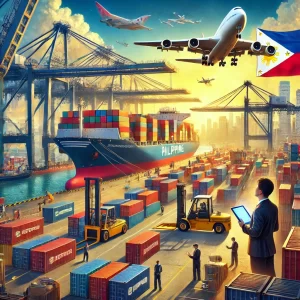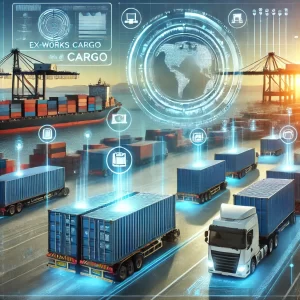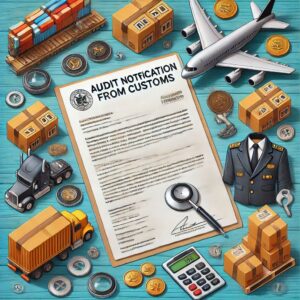Customs clearance is crucial for international trade, ensuring goods meet regulatory standards, collecting tariffs and taxes, protecting national interests, and facilitating trade. It also enhances security by screening for threats, maintains records for trade statistics, and enforces trade agreements. This process helps balance smooth commerce with adherence to legal and safety regulations.
Navigating customs can often feel like wading through a maze, but with the right approach, you can streamline the process and avoid unnecessary delays. Whether you’re a seasoned importer/exporter or new to international trade, expediting customs clearance is crucial for efficient and timely delivery of goods. Here’s a comprehensive guide to help you through the process.
1. Understand Customs Regulations
Before you even think about shipping, familiarize yourself with the customs regulations of the countries involved. Each country has its own set of rules, documentation requirements, and tariffs. Understanding these can save you from costly mistakes and delays.
- Research Requirements: Visit the customs authority websites of both the exporting and importing countries.
- Stay Updated: Customs regulations can change frequently, so ensure you have the most current information.
Subscribe to the Ex-works24/7 newsletter
2. Documentation for Customs Clearance
Proper documentation is key to expediting customs clearance. Ensure that all paperwork is complete, accurate, and by the regulations.
- Commercial Invoice: This should include a detailed description of the goods, their value, and the country of origin.
- Packing List: This helps customs verify the contents of the shipment.
- Bill of Lading/Air Waybill: This proves the contract between the shipper and the carrier.
- Certificate of Origin: This document proves the origin of the goods and can affect tariff rates.
- Import/Export Licenses: Depending on the type of goods, you might need specific licenses.
3. Use a Customs Broker
A licensed customs broker can be invaluable in navigating the complexities of customs clearance. They are experts in handling the paperwork and ensuring compliance with regulations.
- Choose Wisely: Select a broker with experience in your industry and the countries you’re dealing with.
- Communicate Clearly: Provide all necessary information and documentation to avoid misunderstandings.
4. Classify Goods Correctly
The correct classification of goods is crucial for determining the appropriate duties and taxes. Misclassification can lead to delays and additional costs.
- Harmonized System Codes: Ensure you’re using the correct HS codes for your products. These codes are used internationally to categorize goods.
5. Ensure Compliance
Some goods may be subject to import or export restrictions or require special permits. Make sure you are aware of any such restrictions for your products.
- Check Restrictions: Review any embargoes, quotas, or special regulations that may apply.
6. Utilize Pre-Clearance Programs
Some countries offer pre-clearance programs that allow goods to be processed before they arrive at their destination. These programs can significantly speed up the clearance process.
- Apply for Programs: Research and apply for relevant pre-clearance programs in the countries you’re trading with.
7. Choose the Right Shipping Method
The shipping method can impact how quickly your goods clear customs. Air freight is generally faster than sea freight, but it’s also more expensive.
- Balance Cost and Speed: Choose a shipping method that aligns with your priorities and budget.
8. Track Your Shipment
Keep an eye on your shipment’s status to anticipate potential issues during transit or at customs.
- Use Tracking Tools: Many carriers offer online tracking tools that provide real-time updates.
9. Address Any Issues Promptly
If customs raises any issues or requires additional information, address them as quickly as possible. Delays in responding can prolong the clearance process.
- Be Responsive: Provide any additional information or documentation requested by customs authorities promptly.
10. Build Strong Relationships with Customs
Establishing a good rapport with customs officials can sometimes help in expediting the process. While this doesn’t guarantee faster clearance, it can facilitate smoother interactions.
- Communicate Professionally: Maintain clear and professional communication with customs officials and be courteous in all interactions.
Conclusion: Expediting customs clearance involves a combination of thorough preparation, accurate documentation, and effective communication. By understanding customs regulations, preparing detailed paperwork, and utilizing the services of experienced professionals, you can significantly reduce delays and streamline the import/export process. Stay proactive and informed, and your customs clearance experience will be much smoother and more efficient.
Frequently
Asked Questions
Essential documents include the commercial invoice, packing list, bill of lading, and any necessary import permits or certificates. Ensuring all paperwork is complete and accurate can significantly speed up the process.
To ensure compliance, familiarize yourself with the customs regulations of the destination country. This includes understanding tariff classifications, duties, and restrictions. Consulting with a customs broker can also help ensure that all regulations are met.
A customs broker is knowledgeable about customs regulations and can assist in preparing and submitting the necessary documentation. They can also provide advice on duty payments and help navigate any potential issues, which can greatly expedite the clearance process.
Accurate labeling and classification help customs officials quickly identify the contents of a shipment, reducing the likelihood of delays. Misclassification or unclear labeling can lead to additional inspections or holds, so ensuring accuracy is crucial.
Yes, many countries have trusted trader programs (like the Customs-Trade Partnership Against Terrorism, or C-TPAT, in the U.S.) that allow certified companies to enjoy expedited customs processing. Enrolling in such programs can facilitate faster clearance for future shipments.




